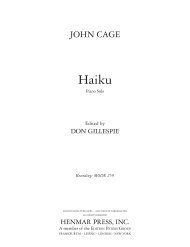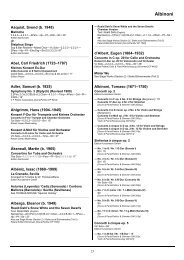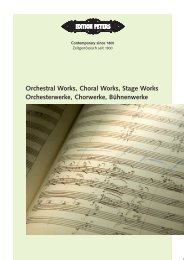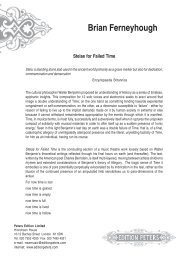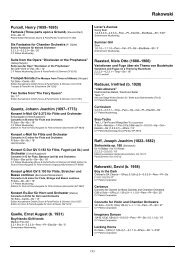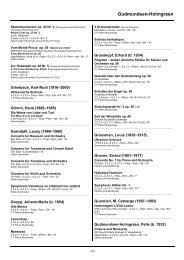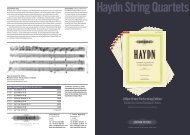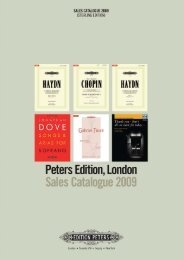Time and Motion Study I.pmd
Time and Motion Study I.pmd
Time and Motion Study I.pmd
- No tags were found...
You also want an ePaper? Increase the reach of your titles
YUMPU automatically turns print PDFs into web optimized ePapers that Google loves.
Brian Ferneyhough<strong>Time</strong> <strong>and</strong> <strong>Motion</strong> <strong>Study</strong> I (1971-7)Solo Bass ClarinetDuration: 9 minutesFirst performance: March 1977, Royan Festival, Harry SparnaayThe densely worked <strong>and</strong> complex textures prevailing throughout much of this composition are, in alarge part, a direct reflection of its dual point of origin. The title is intended to suggest both a desire tointegrate the concept of efficiency as applied to the relationship between the performer, notation <strong>and</strong>realisation more explicitly into the fabric of the material <strong>and</strong> its organisation than is perhaps customary,<strong>and</strong> the conviction that time is most usefully conceived of, not merely in a linear but also in a verticalfashion (i.e. as a function of the mutual interaction of several distinct <strong>and</strong> layered process-types).Both of these concerns seem to me most effectively exposed in works for a small number of performers.The employment, as here, of a single instrument – one, moreover, restricted to a single-str<strong>and</strong>,monophonic texture – allows for a direct confrontation with the internal polyphony of a musical gestureor process in a way which more overtly multiplex structures might actually serve to disguise or evenhinder completely. The linearity of <strong>Time</strong> <strong>and</strong> <strong>Motion</strong> <strong>Study</strong> I is thus “exploded” into its componentelements in a way as to enable each of them to be treated as an independent entity, to be exp<strong>and</strong>ed,made more diffuse, or eliminated altogether at will. By these means a number of linear “tendencies”were generated which serve to dictate the degree of focus which the discourse may assume at anygiven juncture. The textures produced can, in their turn, be understood as points of departure for newchains of tangential activity, or organised ambiguity, of processuality: in short, of verticality.Further polyphonic layers are suggested by the degree to which the learning-rituals of the performerare audibly incorporated into the gestural flow of events. In order to learn <strong>Time</strong> <strong>and</strong> <strong>Motion</strong> <strong>Study</strong> I theinterpreter needs to be prepared to admit the possibility of his performing technique being madetranslucent to individual inadequacy, since the structural information thus provided is meant to refer thelistener back to the “real time” activity of learning <strong>and</strong>, even, of composing the piece in the first place.The performance, the work object, are both intended to be stages in a continuum, not an end inPeters Edition LimitedHinrichsen House10-12 Baches Street London N1 6DNTel: 020 7553 4030 Fax: 020 7490 4921e-mail: newmusic@editionpeters.cominternet: www.editionpeters.com
Brian Ferneyhough<strong>Time</strong> <strong>and</strong> <strong>Motion</strong> <strong>Study</strong> I cont.themselves. In a complicated (<strong>and</strong> complex) situation, only complex (if not necessarily complicated)reactions seem to me appropriate. Music needs to be both self-reflexive <strong>and</strong> self-critical: <strong>Time</strong> <strong>and</strong><strong>Motion</strong> <strong>Study</strong> I seeks to reconcile these conflicting dem<strong>and</strong>s through its insistence upon a closed,cogent form which, in all other respects, is open.Completed early in 1977, this work received its first performance during the Royan Festival of thesame year by Harry Sparnaay, to whom it is dedicatedBrian Ferneyhough, 1979Peters Edition LimitedHinrichsen House10-12 Baches Street London N1 6DNTel: 020 7553 4030 Fax: 020 7490 4921e-mail: newmusic@uk.edition-peters.cominternet: www.edition-peters.com



